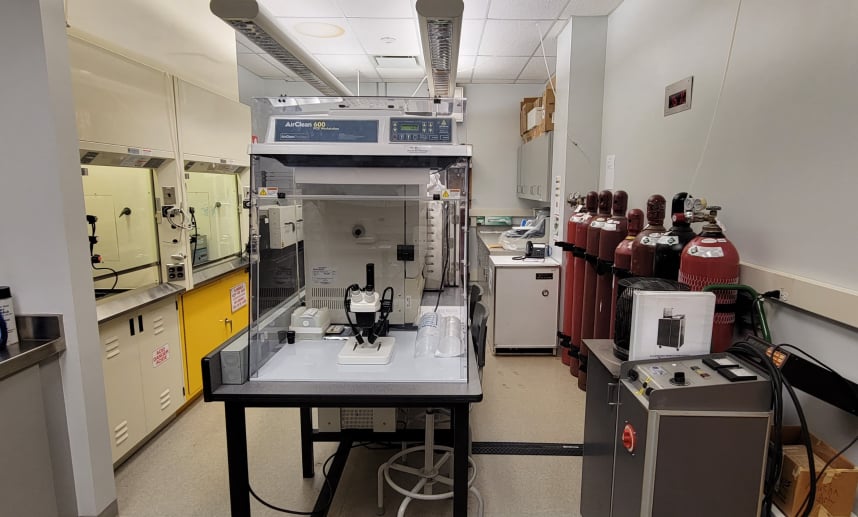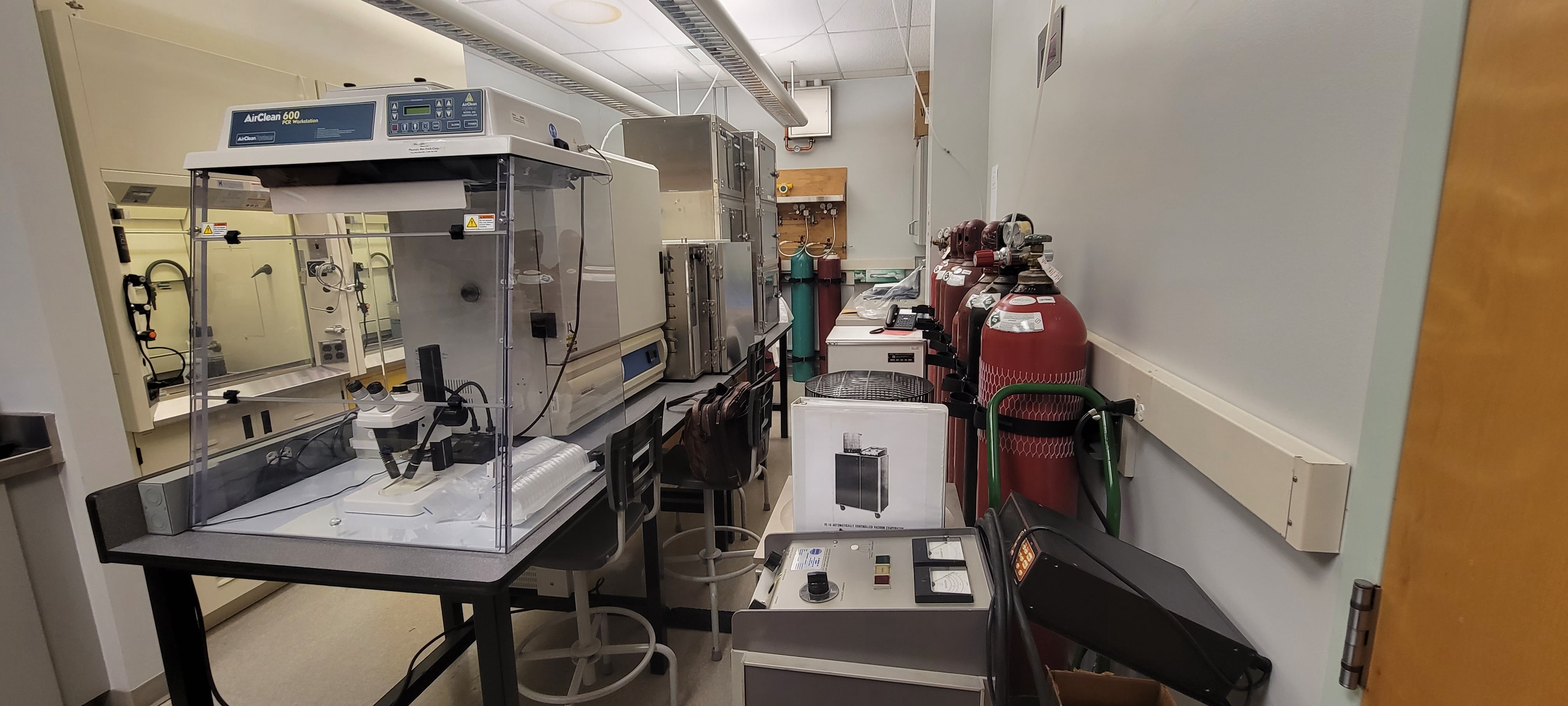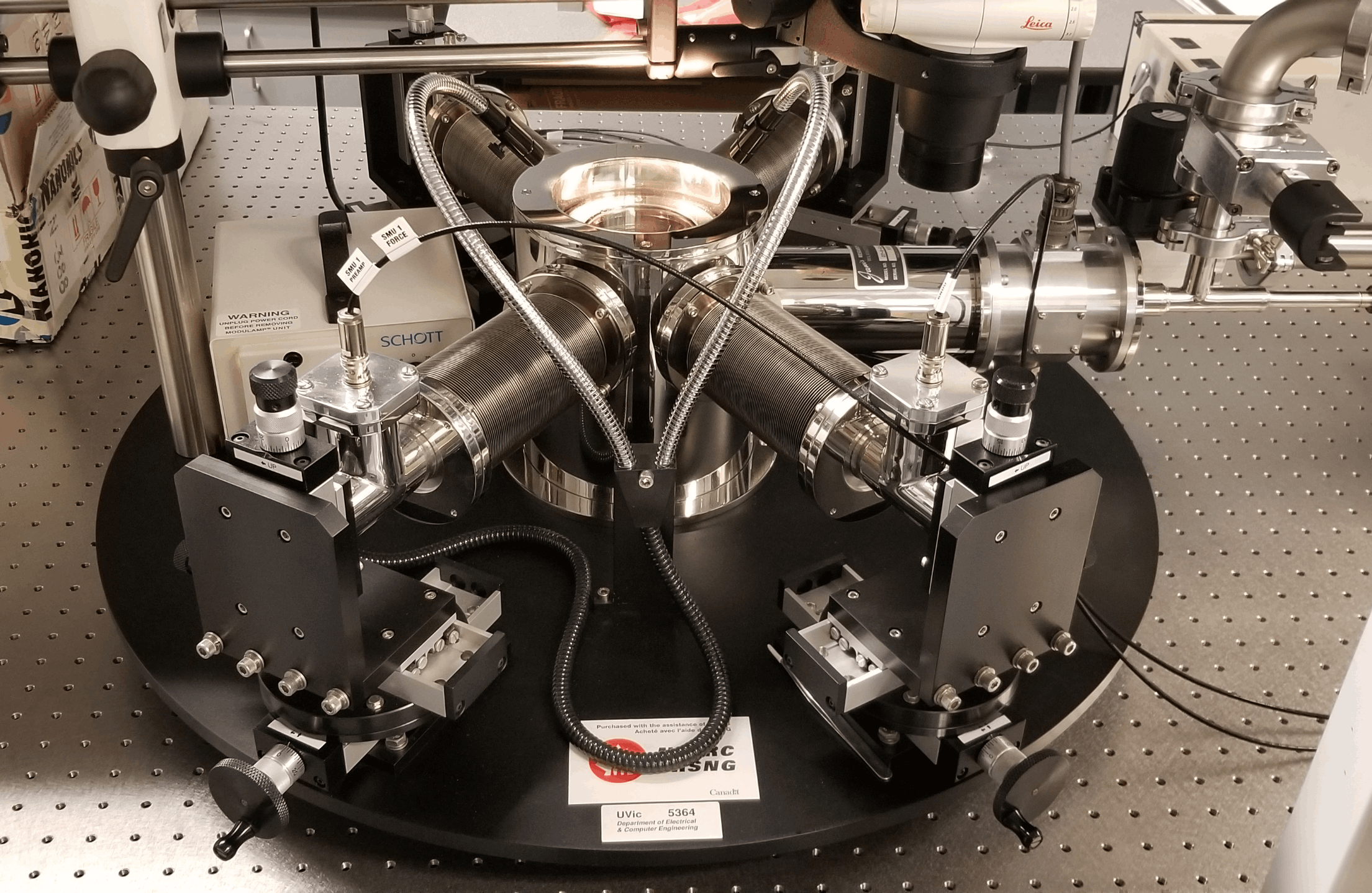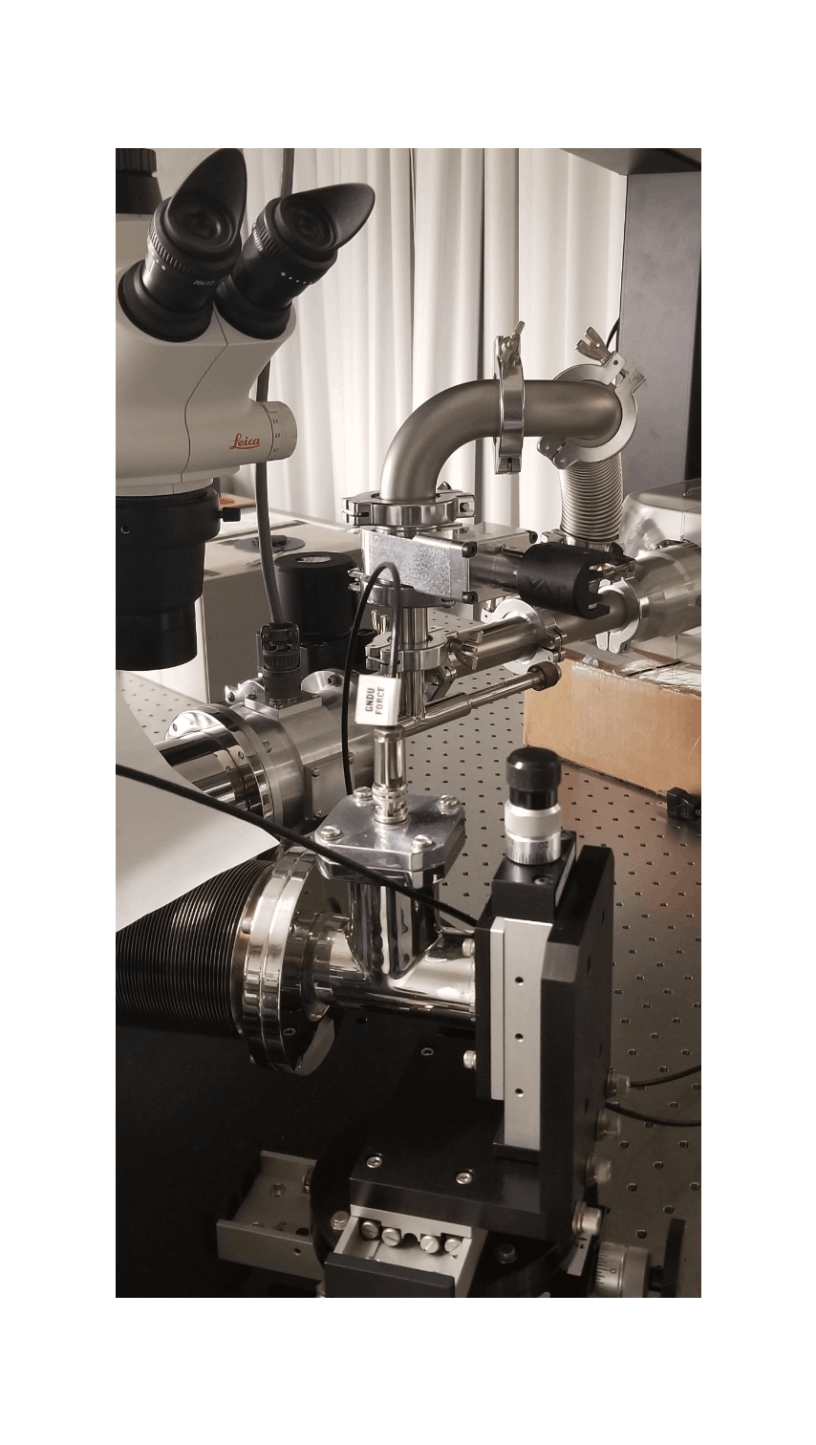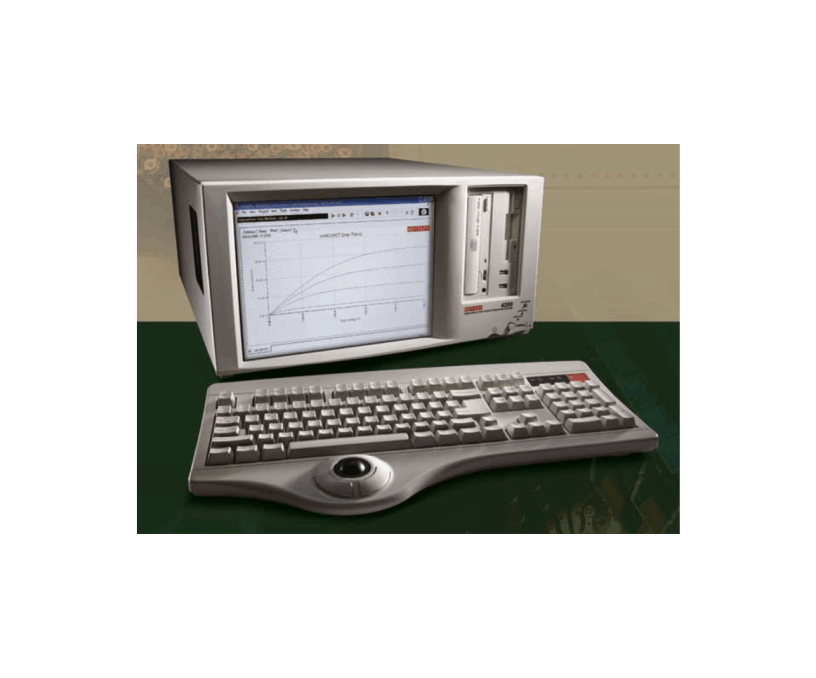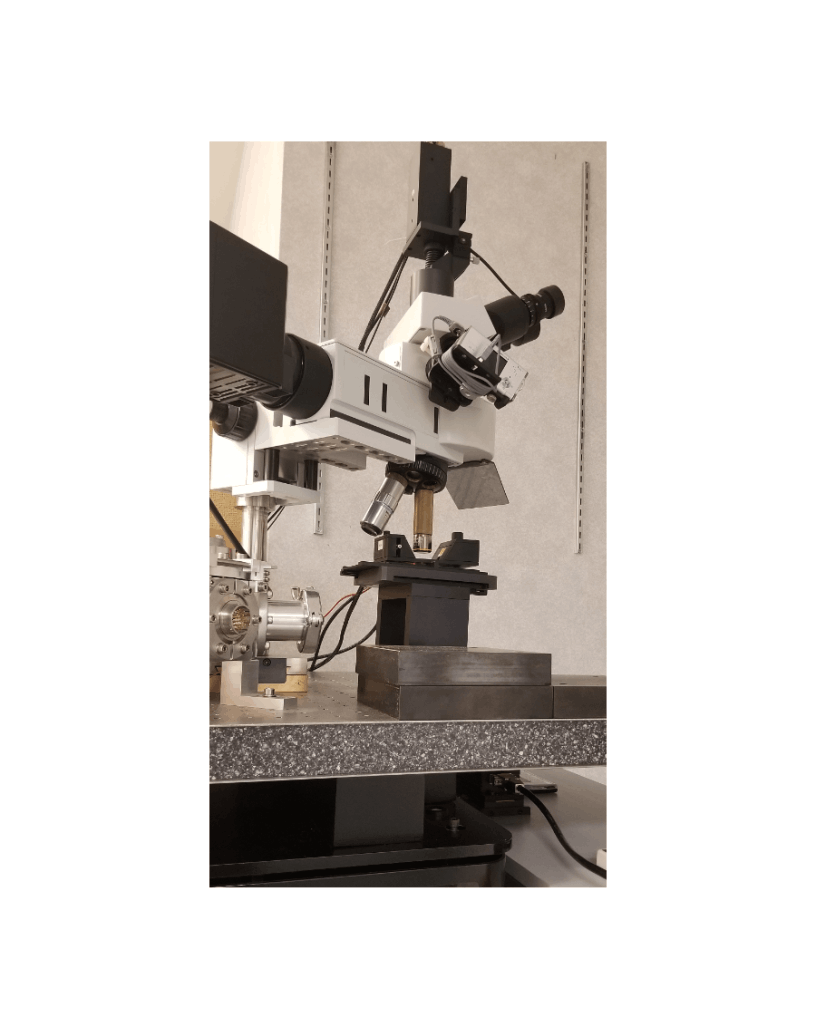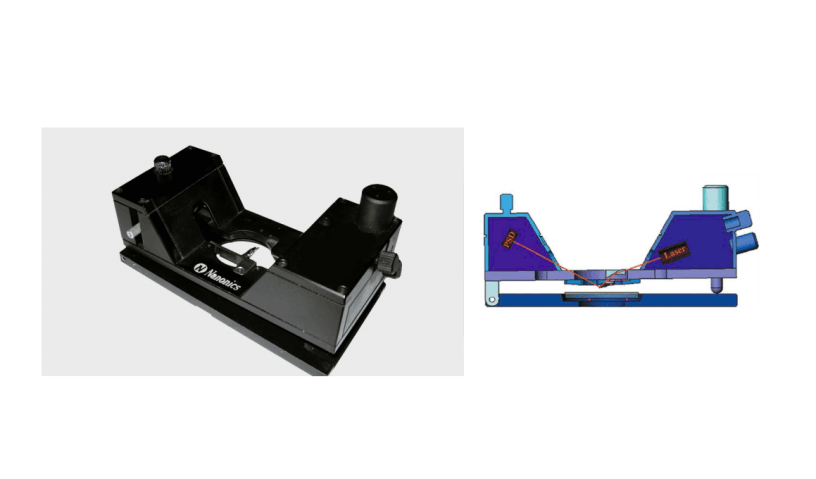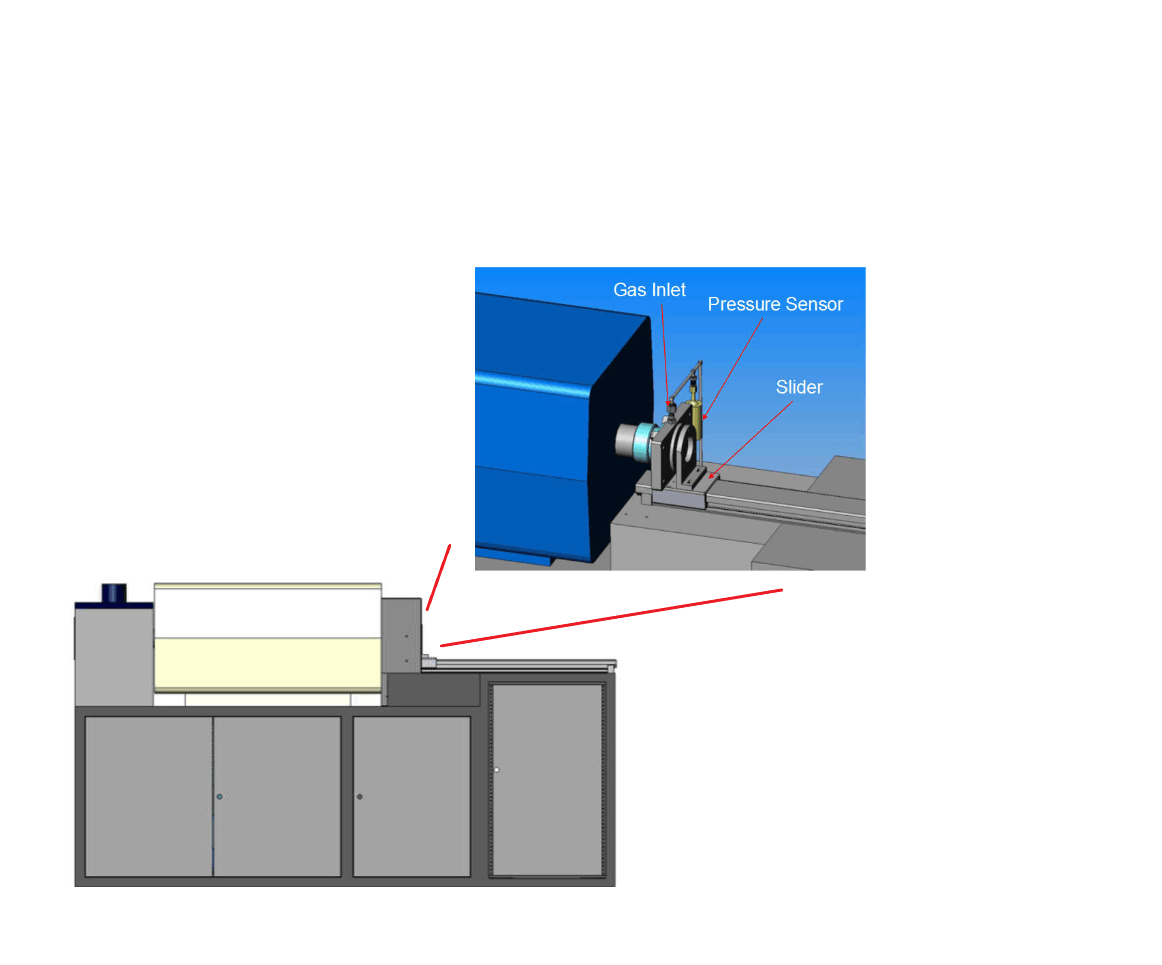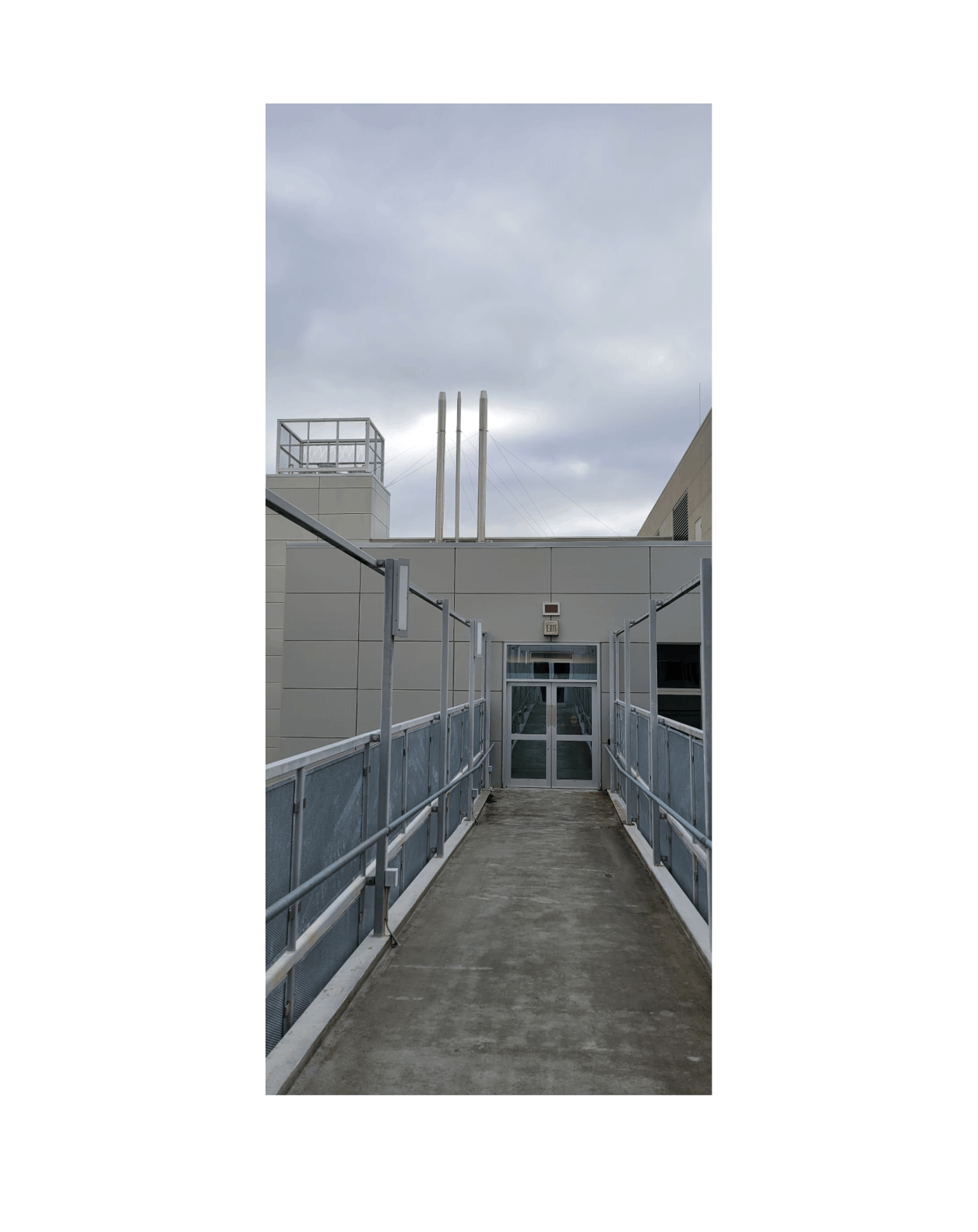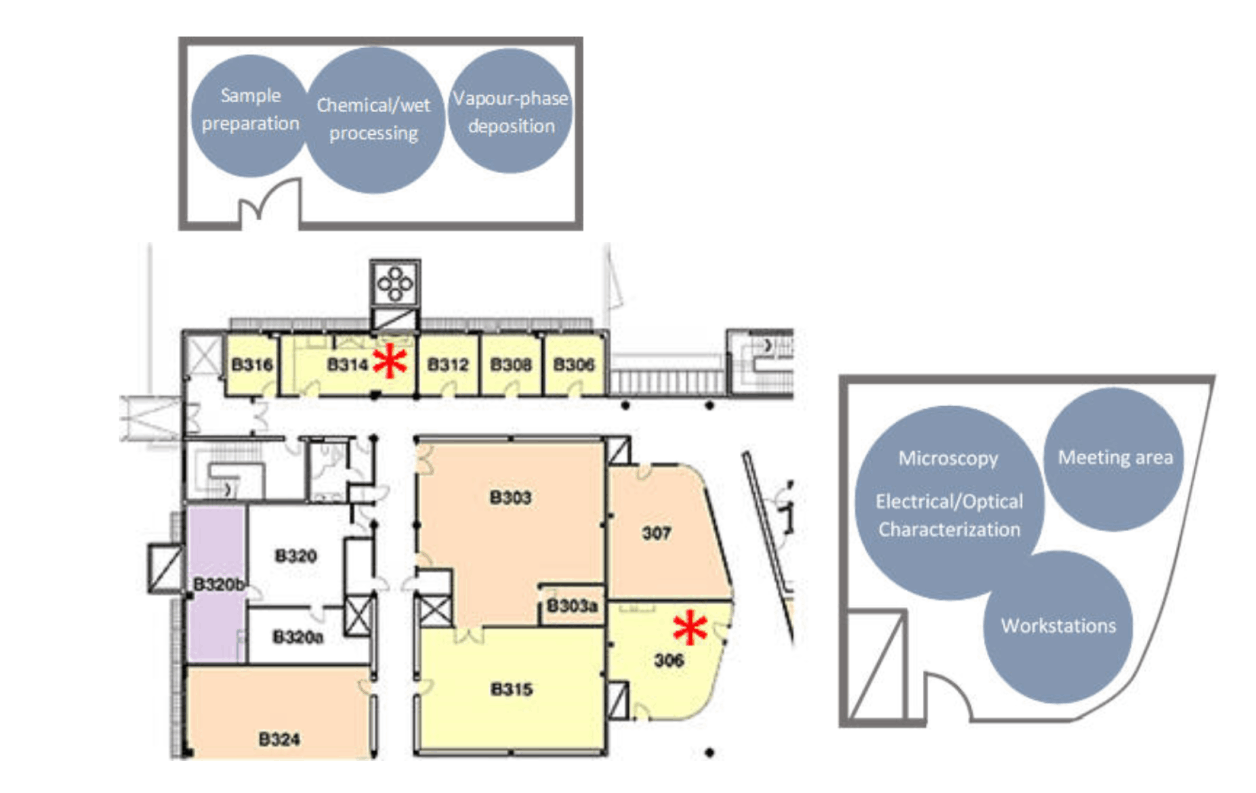
Figure 3. Lab locations and general layout.
Lab
The laboratory consists of two locations (Figure 3) within the Engineering Lab Wing (ELW) on the main University of Victoria campus.
Nanonics Scanning Probe Microscope
Olympus BXFM Optical Microscope
Leica S6D Optical Microscope
B&L StereoZoom 4 Optical Microscope
CVD Tube Furnace
Nanolithography
Thermal Evaporator
Fritsch Grinding Mill
Class 100 Laminar Flow Workstation
Chemical/Wet Processing, Spin-Coater, Ovens, etc.
Janis Electrical Probe Station
Keithley 4200-SCS Semiconductor Characterization System
Gas Sensor Characterization
Photoconductance
Contact Angle
First-Principles Atomistic Electronic Structure Calculations
Density Functional Theory
Quantum Electronic Transport
SPICE
Large scale computations are supported by the Digital Research Alliance of Canada.

Figure 3. Lab locations and general layout.
The laboratory consists of two locations (Figure 3) within the Engineering Lab Wing (ELW) on the main University of Victoria campus.
